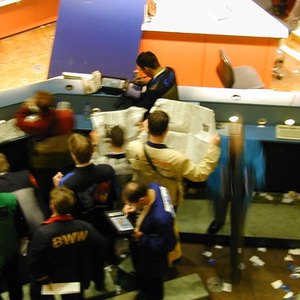
The fair value of the Dow Jones futures contract is often discussed on the financial news networks before the stock market opens. A comparison of the fair value of the futures contract to the actual index value may indicate which way the market will open--up or down.
Considerations
The Dow Jones futures contracts have their value based on the Dow Jones Industrial Average. The futures do not have a carrying cost compared to owning any of the 30 stocks in the Dow Jones. The fair value calculation adjusts the cost of the future compared to the cost of owning the Dow Jones stocks.
Factors
To buy the stocks in the Dow Jones, interest would be paid on money borrowed to buy the stocks. Owning the stocks would entitle the holder to receive any dividend payments from the stocks. So the future fair value must be adjusted by the current interest rate and the dividend rate of the Dow Jones stocks.
Formula
The futures fair value is the current prices of the stocks in the Dow Jones plus the finance or interest rate to buy the stocks, minus the dividends that would be received during the life of the futures contract.
Example
If the current broker interest rate is 4 percent and the dividends would be 1.5 percent, to get the future fair value use a multiplier of 1 plus 0.04, minus 0.015, which equals 1.025 times the current Dow Jones index value. If the Dow is at 10,000, the future fair value would be 10,250.
Effects
If the current interest rate is greater than the dividend rate, the fair value will be higher than the cash index. This is called "negative carry." Positive carry occurs when the dividends are greater than the finance cost to own the stocks and the future fair value will be less than the index value.
References
Writer Bio
Tim Plaehn has been writing financial, investment and trading articles and blogs since 2007. His work has appeared online at Seeking Alpha, Marketwatch.com and various other websites. Plaehn has a bachelor's degree in mathematics from the U.S. Air Force Academy.

